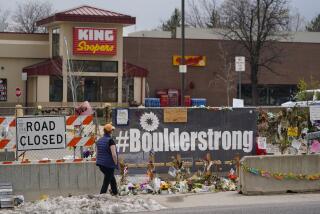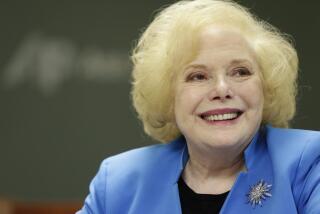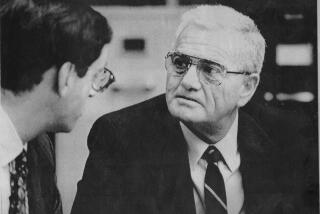THE O.J. SIMPSON MURDER TRIAL : A Hard Way to Learn About DNA
The lawyers may be doing it all wrong if they want the jurors to understand the DNA evidence so crucial to the O.J. Simpson murder trial.
That’s the feeling I got recently when I visited an honors science class studying DNA at the Los Angeles school district’s magnet school at the L.A. Zoo.
I went there because I thought that if teacher Barry Shapiro’s 10th-graders can comprehend the subject, then the adult jurors in the Simpson murder trial should also be able to master the mysteries of DNA.
Like Barry Shapiro’s students, the jurors don’t seem to have a sophisticated scientific background. Their jobs include such occupations as vendor, county property appraiser, truck driver, marketing representative, computer technician, post office employee, insurance claims adjuster and receptionist.
Four of the 12 are 50 or older, meaning that they were in high school in the early ‘60s when DNA was just making its way into the biology curriculum. Even those young enough to have studied DNA in school probably don’t recall the details.
So when it comes to science, the jury is probably not too different from Shapiro’s class.
*
The environment at the Zoo Magnet School, however, is much more conducive to learning than Department 103, Judge Lance A. Ito’s court.
The students were intently writing down answers for the test that marked the end of their three-week DNA course. The room was quiet. Visual aids were on the walls. Computers were at the front of the room and microscopes were neatly stored on shelves.
Here, a visitor feels the possibility of a bright future, compared to the bleakness of Department 103, a courtroom infected with the hopelessness of decades of criminal trials.
The 52-year-old Shapiro (no relation to Simpson defense attorney Robert Shapiro) is a cheerful, optimistic man with a twinkle in his eye and a neatly trimmed white beard.
He’s fascinated with the fast-changing science of DNA--deoxyribonucleic acid, the molecule that shapes our growth and development as individuals. “I can’t teach now what I taught three years ago,” he said. “It changes so rapidly.”
Shapiro said that, to prove its case, the prosecution will have to show that the DNA in the blood found at the crime scene and Simpson’s house matched that in the blood of Simpson and the victims, Nicole Brown Simpson and Ronald Lyle Goldman. That means the jury will have to understand how the molecule works.
In class, Shapiro said, the students not only listen to his lectures, but ask questions, engage in classroom discussion and talk about DNA in small groups. They have visual aids and take part in hands-on demonstrations of the nature of the molecule.
This multiplicity of teaching methods, Shapiro said, provides for the needs of all kinds of learners: audio learners, who remember what the teacher says; visual learners, who must see demonstrations, and mechanical learners, who absorb best when they can touch and handle an object.
None of these conditions exist for the jury. The prosecution hasn’t reached the presentation of DNA yet, but in its discussion of preliminary blood evidence, visuals have been few and uninteresting. There have been no hands-on demonstrations. So far, visual and mechanical learners are out of luck.
Moreover, jurors are not permitted to ask questions in court. If experts say something that goes over the jurors’ heads, they can’t interrupt and have them go over the ground again. Nor can jurors discuss the evidence among themselves.
As a result, Shapiro said, jurors can leave the courtroom “with a completely wrong concept. They may not understand it. The jury is totally handicapped. The prosecution and defense will have no idea whether the jury understands it. This seems to be the biggest piece of evidence and you are going to put someone’s life on the line based on whether 12 persons understand a scientific concept without them asking questions.
“If you present the subject just one way and don’t have a discussion, you are going to lose everybody,” he said. “Let them see, and if possible let them do.”
This, of course, would require a revolution in the way a jury deliberates. Jurors would be permitted to interrupt the proceedings with questions. They’d be permitted to discuss the day’s proceedings, as normal people do. Some of these ideas have been discussed by jury reformers, but they are a long way from being put in practice in the California courts.
*
And even with the best of conditions, the jurors may have trouble with the subject. On Monday, Shapiro called me with the students’ test results: one A, seven Bs, seven Cs, four Ds and five Fs.
“What chance will the jury have if it can’t ask questions?” said Shapiro.






